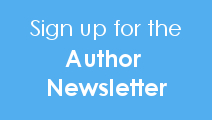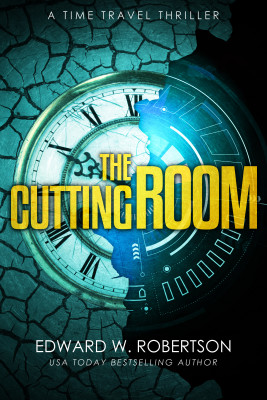The Great Amazon Experiment, Week 2: Small Fry, Prepare to Get Eaten Alive by the Giant Long-Fanged Authorosaurs
Sales of When We Were Mutants & Other Stories picked up a little last week–and I do mean “a little”; that span saw a grand total of three purchases–and I can explain why: again, word of mouth. Someone I know mentioned it to some of their friends, who surfed over, saw it listed at a negligible price, and ordered away.
Conclusions drawn (usual Small Sample Size Theatre caveats apply): word of mouth from trusted sources is a much, much more powerful force than random advertising. The (admittedly limited) self-promotion I made on Kindleboards.com and Amazon’s board resulted in zero sales. Someone telling their friends “Hey, this stuff is good, you should check it out” resulted in two.
Again, this dataset is so small it risks meaninglessness, but whatever evidence there is points to “word of mouth = $.” “HAI GUYS BUY MY BOOK = 🙁 “
Thoughts on Pricing
I dropped the price from $1.99 to $0.99 for the last week, but that appeared to make no difference. If the material’s worth anything at all, $2 for a couple hundred pages is a bargain. I could be biased by feeling like a fool when I was selling it at $1, but I have a hard time believing the jump from $1 to $2 is enough to scare off legions of penny-pinching ereaders.
While I’m on the subject, Amazon is doing some brilliant things here. Setting a low-end cap of $0.99 is just plain smart, heading off the inevitable race to the bottom that would have resulted without a lower limit. Without that, people would step all over themselves to sell their novels for a penny. Granted, hundreds (thousands?) of people are just giving their work away for free, but at least this way there’s some limit to the ways people can sell themselves short.
Next month, they’ll provide 70% royalties (instead of 35%) for anyone selling their books at $2.99 and up. More brilliance: while this doesn’t force anyone to up their prices, it creates a strong incentive for a soft cap of $2.99. Given these rates, authors who sell at $0.99 will have to sell six times books to match the profits of one sale at $2.99. I consider it unlikely that readers are six times as likely to buy a $0.99 book as a $2.99 book. (For that matter, let’s have some pride here, people. In restaurants, the most-bought bottle of wine is the second-cheapest bottle on the list. No one who offers a $10 blowjob has a full set of teeth. Treat your work like it’s worth the work you put into it.)
Ranting aside.. I can see pricing one work at $0 or $1 to provide a cheaper entrypoint into your other books. I may experiment with that myself by offering one story from WWWM for free when I up the price on the collection to $2.99.
(Immediate update: I just read indie authors will no longer be able to price books at $0–only publishing houses will be able to price at that rate. Or at any rate, it costs indies something to do so? Dunno the specifics. But I like this, if only because, as is probably clear, people giving their work away for free makes me grumpy.)
On the Market for Short Stories
I’ve been suspicious short stories and collections might not sell as well as novels. A recent thread on Amazon gave words to my fears. Why buy a collection of short stories when there are so many–and so many good ones!–available for free at scores of online magazines? I mean, almost every story I’ve sold is available at no cost wherever it was published.
As for individual short stories, as I said in that thread, I would pay $0.99 as fast as I can open my electronic wallet for a story by Neal Stephenson or Iain M. Banks. For a story from random unknown nobody, pbbt. No dice.
I do think, however, collections are viable. They can have the page bulk of novels, and if I were to read a short story at a magazine I really liked, surfed over to Amazon, and saw they had a low-priced collection, I’d be tempted. I think this is part of the phenomenon J.A. Konrath has pointed to that, even though he has much of his work available for free on his website, people go over to Amazon to pay money for it anyway. Several possible factors: a) people will pay a small sum to get a work in the format they prefer; b) they just overlook the free stuff, assuming a pro like Konrath must only have his work for sale through a professional retailer; c) they want to support an author they like.
Long-Term Predictions for Indie Authors
First off, the term “indie authors” makes me mad for some reason, but it works fine for indie bands and films, doesn’t it? Maybe I’ll get used to it, but right now it smacks of relabeling yourself something less truthful/awful than “dude or dudette who couldn’t sell to a real publisher.” You know, like how people say “HPV” instead of “genital warts.”
Objections of terminology aside, indie authors are currently in a golden age. It’s incredibly cheap and easy to get your work in front of a potentially vast audience that’s currently going mad for ebooks. People with little to no success in traditional publishing are raking in thousands of sales of self-published books.
I think that’s great! Diversity is healthy in any environment, including economic ones. But I wonder if this flourishing of strange, sometimes beautiful small creatures is about to face mass extinction.
E-readers are exploding. Somebody buys a Kindle or an iPad, the first they they want to do is stuff it full of apps and ebooks. Get their money’s worth. I do think we’re still on the exponential growth section of the curve, but eventually, be it next year or in 2525, most people who will ever get an ereader will have got it, and will no longer be buying books at a frantic “Give me MOAR!!!” pace.
Second, for the moment, big publishers fucking suck at getting their new releases and their backlists available at reasonable prices (and I do consider $6-15, depending on what format the physical copy’s currently in, to be reasonable). Nimble, fast-acting indie authors are doing well in part because the professional competition has only begun to lumber onto the scene.
That won’t last. Publishers will get their act together. Quite possibly, more midlist authors like Joe Konrath will begin offering their own professional titles at indie-author rates. There’s really nothing to stop bestsellers from doing this, either, so long as they take the precaution of informing their publishers of this via email rather than by phone, where they’d be deafened by shrieks of dismay.
Sooner or later, this professional competition will arrive. Likely, there will still be two main submarkets: the big pros with the big publishers at the $6-15 range, and the indies, abandoned midlisters, and go-their-own-way pros occupying the $1-5 market. There will still be room for success for authors who’ve never sold one word professionally. But I imagine once the e-equivalent of the danbrownosaurs and stepheniemeyergators stake out their territory, a vast amount of those agile little indie-mammals are going to get devoured wholesale as readers turn to authors they trust at prices comparable to what the unknowns can offer.
One Response to The Great Amazon Experiment, Week 2: Small Fry, Prepare to Get Eaten Alive by the Giant Long-Fanged Authorosaurs
The Cutting Room: A Time Travel Thriller
In the future, there are many parallel Earths--but only one of them has time travel. Known as Primetime, its criminals break into the pasts of other...
More info →- Fantasy (5)
- Science Fiction (16)
- Breakers (11)
- Rebel Stars (3)
- The Cycle of Arawn (4)
- The Cycle of Galand (1)






Leave a Reply